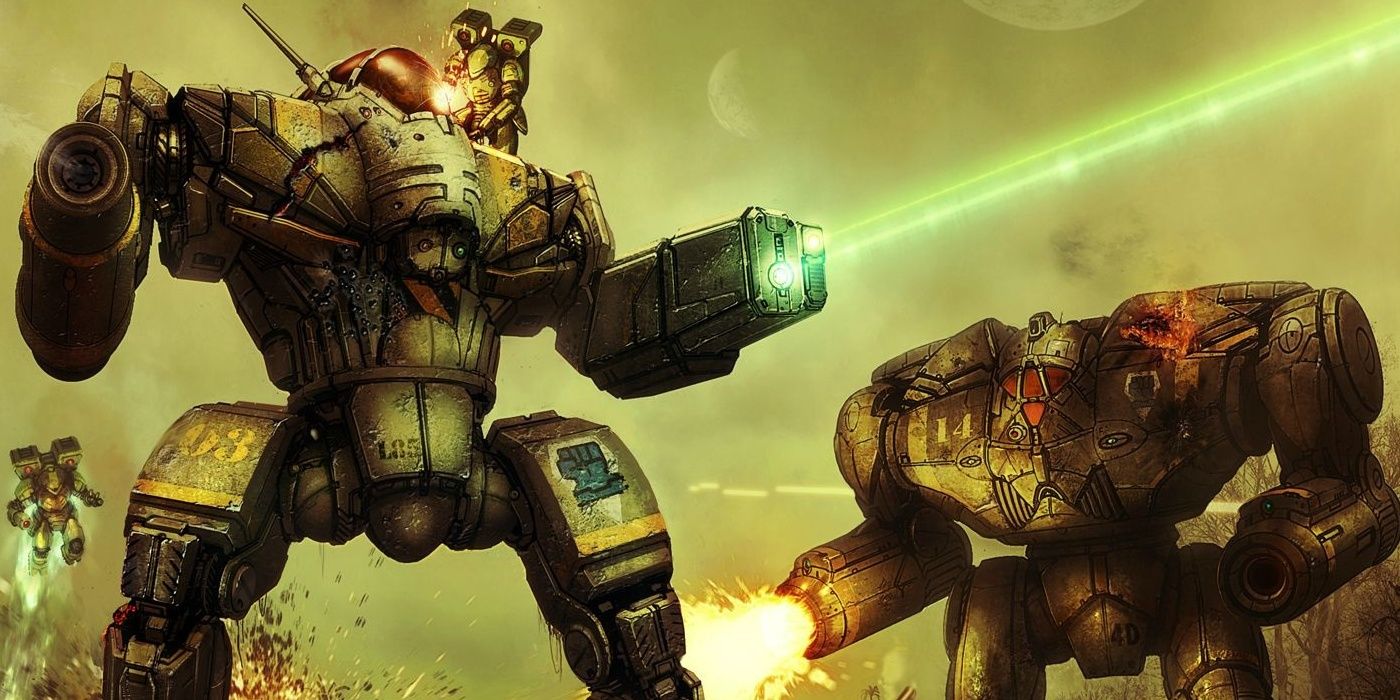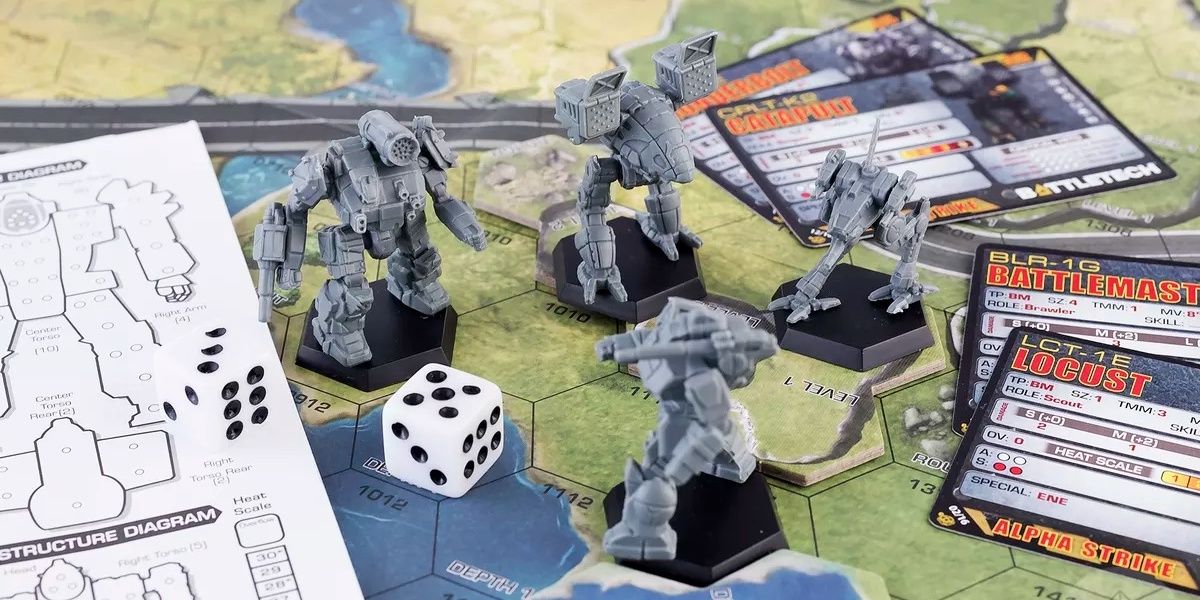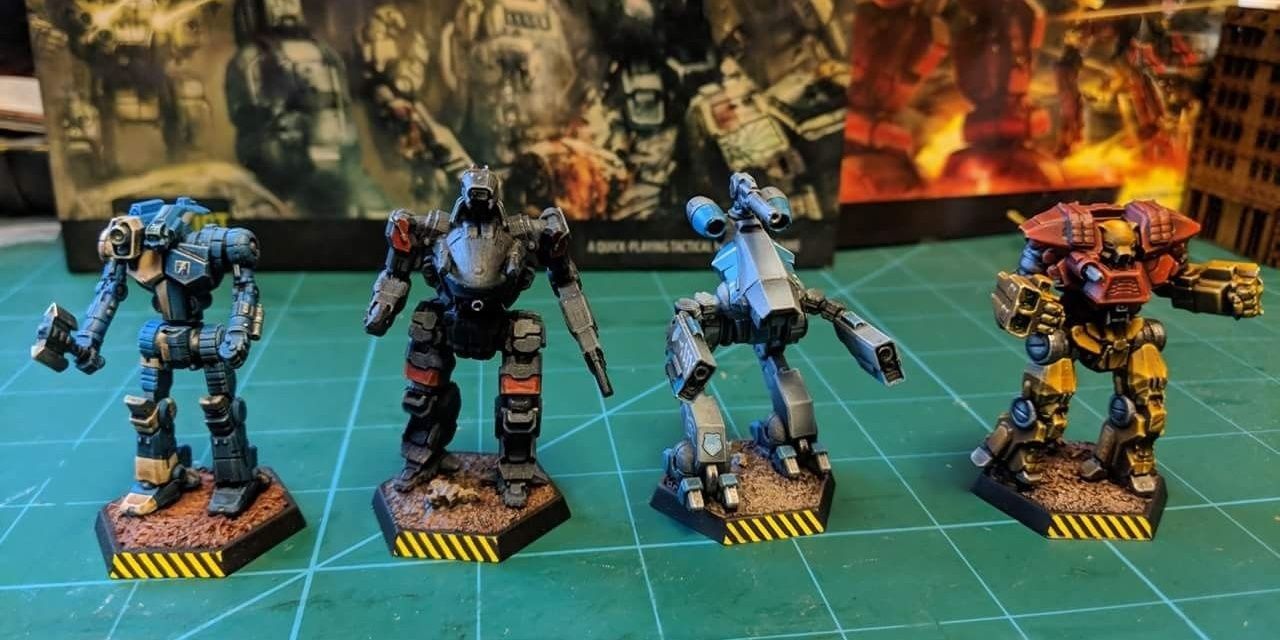
The MechWarrior PC gaming franchise is a beloved series of battle simulators where the player takes command of giant armored robots fighting on futuristic battlefields. These are no ordinary arcade shoot-em-ups; the MechWarrior games demand careful tactical thinking and attention to detail -- and the same is true of the board game that launched the entire franchise, Classic BattletTech.
Set in the same universe as the PC games, the Classic BattleTech board game is a tabletop miniatures strategy game, roughly similar to Warhammer 40,000 and any variety of Civil War or World War II miniatures games. Catalyst Game Labs regularly churns out new starter sets for novice players, and rookies can practice by themselves to hone their skills in this deep game.

Newcomers to this gaming universe will find everything they need to launch a battle when they open up a starter box. The game is broken down into a few key components. All games of Classic BattleTech are played on map sheets, which represent the battlefield terrain, and these maps are fully colored and feature grasslands, rivers, hills, gorges, buildings and more. Also, unlike the Alpha Strike version of the game (which is separate), Classic BattleTech maps are covered in a hex grid, which may remind players of Sid Meier's Civilization's own map system.
A game can be played on just one map to keep things small, or players can combine maps and align their hexes to make a larger battlefield. In fact, experienced players may randomly select a few maps from their collection to create unpredictable battlefields and keep the game fresh. Starter kits come with just a few maps, but players can find or print new maps.
The game also uses miniature models that represent the 'Mechs. In the PC games, players are put right into a 'Mech's cockpit (complete with a detailed HUD), but in this game, the player looks down on all 'Mechs from the outside, rather like in a real-time strategy game. A team can have any number of 'Mechs in it, and a player can control the entire team's worth if they want.
The vital statistics for these 'Mechs are tracked on record sheets, such as listing the 'Mech's weapons and ammo, running speed, special equipment, heat sinks and, most importantly, its armor and internal structure values. As a 'Mech takes fire, the player marks off the circles on its armor diagram, and the 'Mech might fall apart piece by piece as the game progresses.
As for auxiliary supplies, Classic BattleTech isn't too demanding, despite its complexity. An ordinary pencil is just fine to mark off armor points or cross off damaged equipment on the record sheet, and two six-sided dice control the 'Mech's weapons fire and roll for the initiative on each turn. The player can add a few more dice of different colorS to keep track of each 'Mech's movements to avoid confusion.

Even when the basic rules are in use, as opposed to the massive tournament rulebook, Classic BattleTech is a highly detailed and fairly complex game, putting the likes of Monopoly to shame. It's a great idea for a novice player to play a few basic practice games to get used to the game's rules, from 'Mech movement on the maps to determining to-hit rules for weapons fire and tracking internal damage on the 'Mechs.
Ideally, the player will have a partner or two to control the opposing team (there must be exactly two teams), but Classic BattleTech is surprisingly rewarding to play solo. If the player wants, they can set up a small game all by themselves and control both teams, giving them a feel for the game's flow.
It helps that Classic BattleTech, in its simplest form, doesn't make use of hidden information, such as cards. Instead, everything is out in the open, and the solo player doesn't have to pretend that they don't know what their opponent is doing. The player can also take the game at their own pace as they get used to the rules and gameplay mechanics before playing with a team. Best of all, the game's scope is adjustable. Many board games have a specific board with the same features and layout, meaning the game can't be simpler or more complex than it's meant to be.
By contrast, Classic BattleTech is highly customizable, from single-map skirmishes to having four maps together for a huge battle. The solo player can even pit one 'Mech mini against another, then move up to 2v2, then 3v3 and so on, all without impacting the rules in any way. This flexibility allows players to spend as much or as little time engaged in futuristic warfare as they like, making it a great way to pass a couple of hours or the entire afternoon. A practice session may involve just a few minis, and when the player is comfortable with the rules, it'll be time for an all-out battle with friends.
0 Comments